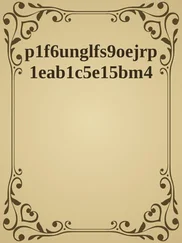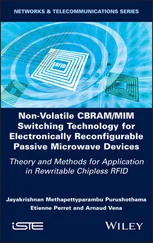Joel P. Dunsmore - Handbook of Microwave Component Measurements
Здесь есть возможность читать онлайн «Joel P. Dunsmore - Handbook of Microwave Component Measurements» — ознакомительный отрывок электронной книги совершенно бесплатно, а после прочтения отрывка купить полную версию. В некоторых случаях можно слушать аудио, скачать через торрент в формате fb2 и присутствует краткое содержание. Жанр: unrecognised, на английском языке. Описание произведения, (предисловие) а так же отзывы посетителей доступны на портале библиотеки ЛибКат.
- Название:Handbook of Microwave Component Measurements
- Автор:
- Жанр:
- Год:неизвестен
- ISBN:нет данных
- Рейтинг книги:5 / 5. Голосов: 1
-
Избранное:Добавить в избранное
- Отзывы:
-
Ваша оценка:
- 100
- 1
- 2
- 3
- 4
- 5
Handbook of Microwave Component Measurements: краткое содержание, описание и аннотация
Предлагаем к чтению аннотацию, описание, краткое содержание или предисловие (зависит от того, что написал сам автор книги «Handbook of Microwave Component Measurements»). Если вы не нашли необходимую информацию о книге — напишите в комментариях, мы постараемся отыскать её.
Handbook of Microwave Component Measurements — читать онлайн ознакомительный отрывок
Ниже представлен текст книги, разбитый по страницам. Система сохранения места последней прочитанной страницы, позволяет с удобством читать онлайн бесплатно книгу «Handbook of Microwave Component Measurements», без необходимости каждый раз заново искать на чём Вы остановились. Поставьте закладку, и сможете в любой момент перейти на страницу, на которой закончили чтение.
Интервал:
Закладка:
2 Chapter 2 Figure 2.1 A TR network analyzer block diagram. Figure 2.2 S‐parameter block diagrams for a three‐receiver and four‐receiver... Figure 2.3 Multiple sources in a single VNA. Figure 2.4 Example of a VNA source block diagram. Figure 2.5 Ratio source match: trace when using a power splitter (upper) and... Figure 2.6 Simplified diagram of source power match. Figure 2.7 Measured incident power into a load termination and an open termi... Figure 2.8 Block diagram for measuring power source‐match. Figure 2.9 A line stretcher used for match measurements. Figure 2.10 Measurement of long line indicating power source‐match using an ... Figure 2.11 Measured source output impedance away from the source frequency:... Figure 2.12 Schematic of a directional bridge. Figure 2.13 Adding a transformer between the source and the bridge. Figure 2.14 Replacing bridge elements with RF ports. Figure 2.15 A bridge redrawn to show the coupling factor. Figure 2.16 An example of a directional bridge from the HP 8753B. Figure 2.17 RF performance of a directional bridge. Figure 2.18 A directional coupler used in VNAs. Figure 2.19 Block diagram of a 1+gamma reflectometer. Figure 2.20 Smith chart showing reflections of a 1+gamma bridge with an open... Figure 2.21 Schematic of a sampler. Figure 2.22 Spurs from a source crossing a harmonic of the VCO. Figure 2.23 Digital IF block diagram. Figure 2.24 A satellite multiplexer with many outputs. Figure 2.25 Simple switch tree test set. Figure 2.26 Full cross‐bar switching test set. Figure 2.27 Extension test set block diagram. Figure 2.28 12‐port system using a 4‐port VNA and two extension test sets.... Figure 2.29 A 50‐port VNA system comprised of 6‐port and 2‐port modules. Figure 2.30 mm‐Wave Head block diagram with broadband capability. Figure 2.31 A 4‐port, 900 Hz to 130 GHz VNA system using mm‐wave extenders.... Figure 2.32 Effects of noise floor on an S21 measurement. Figure 2.33 VNA source signal where phase noise rises above noise floor. Figure 2.34 Example of trace noise decreasing with increased signal level, u... Figure 2.35 Impedance and admittance Smith charts. Figure 2.36 Smith chart (right) and admittance chart (left) with wrapped pha... Figure 2.37 An impedance value rotated by 180° 50 Ω line. Figure 2.38 25 Ω termination proceeded by half‐wavelength segments of 12.5, ... Figure 2.39 Concatenation of two devices. Figure 2.40 Y and Z conversion circuits.
3 Chapter 3 Figure 3.1 Signal flow diagram for a forward and reverse measurements of a D...Figure 3.2 Signal flow diagram with source and receiver errors included.Figure 3.3 8‐term error model, with four measured waves.Figure 3.4 Determining the error terms graphically for open/short/load respo...Figure 3.5 The correct re‐measurement of an open and short after calibration...Figure 3.6 Model for an open circuit.Figure 3.7 Physical construction of (a) female open, (b) male open with exte...Figure 3.8 Variations in the open reflection coefficient due to radiation fo...Figure 3.9 Model for a short standard.Figure 3.10 Short circuit standards (a) male test port, (b) female test port...Figure 3.11 Load elements (a) male test port, (b) female test port.Figure 3.12 (a) Typical model for a load standard, (b) model for a load show...Figure 3.13 Representation of a sliding load.Figure 3.14 Smith chart measurement of a sliding load at a single frequency,...Figure 3.15 Error due to ignoring the length of a non‐insertable Thru, compa...Figure 3.16 Using UT cal to provide a 90° on‐wave calibration.Figure 3.17 Ecal modules are available in a variety of port configurations, ...Figure 3.18 Measurement of the internal standards on an Ecal™.Figure 3.19 Custom multiport calibration test set including Ecal, noise figu...Figure 3.20 Signal flow diagram during source power calibration.Figure 3.21 Variation in a1 due to mismatch on port 1.Figure 3.22 Results from a linearity error measurement for −25 dB (upper) an...Figure 3.23 Block diagram for characterizing incident power mismatch.Figure 3.24 Ripple in incident power (a1_a) and measured source power (a1_s)...Figure 3.25 Ripple in the actual incident power (upper) when the ALC referen...Figure 3.26 Power measurement of an amplifier after a receiver response cali...Figure 3.27 Setup for the Cal All function.Figure 3.28 Dialog for setting the master channel power and attenuator value...Figure 3.29 Cal All Mechanical Devices dialog.Figure 3.30 Cal All creates a master cal with only unique frequency points....Figure 3.31 Using multiple Thrus to link ports.Figure 3.32 Multiport TVAC test setup with CalPods in a the chamber.Figure 3.33 (Upper) After flexing the test cable, (Lower) after re‐correctio...Figure 3.34 Dialog for selecting wave correction and devolving ports.Figure 3.35 (Upper) Measurement of an airline with a response calibration an...Figure 3.36 Using an external attenuator to reduce power to the VNA port 2....Figure 3.37 Measurement of an airline with Enhanced Response Calibration, wi...Figure 3.38 Ripple envelope of the calibration load at the end of an airline...Figure 3.39 Determining directivity with time‐domain gating.Figure 3.40 Ripples from an open and short at the end of an airline.Figure 3.41 The computed residual source‐match shown in the lower plot.Figure 3.42 Measurement of a test port load match, upper is with a good cali...Figure 3.43 Two examples of S21 uncertainty with different coverage factors....Figure 3.44 Uncertainty depends upon the Calkit quality.Figure 3.45 Uncertainty changes with DUT loss.Figure 3.46 Phase error as a result of an error signal.Figure 3.47 A good dog and a good cable: how long will they stay good?Figure 3.48 Noise and dynamic accuracy error versus drive.Figure 3.49 (upper) Error in S11 changing the attenuator difference for 5 an...Figure 3.50 Attenuator offset applied as a de‐embedding after the attenuator...Figure 3.51 Noise added in a signal trace vs. source power.Figure 3.52 Circular interpolation of the load match term.Figure 3.53 Interpolation results with various point spacing.
4 Chapter 4Figure 4.1 Cosine of frequency 8.5 Hz (left), FFT of the waveform in the lef...Figure 4.2 Analytically derived impulse reflection response versus VNA time‐...Figure 4.3 Sinc‐squared frequency response continuous and sampled with a sam...Figure 4.4 One‐pole filter frequency response with and without truncation.Figure 4.5 Windows for Beta factors 0, 3, and 6 (upper); windows applied to ...Figure 4.6 VNA unit step response comprised of a periodic portion (which is ...Figure 4.7 Convolution of the frequency gate response.Figure 4.8 Time gates at three center times (upper); time response of gated ...Figure 4.9 Model of concatenated lines of different impedances (upper), step...Figure 4.10 Model of 2 capacitive discontinuities (upper), step response of ...Figure 4.11 S 11response of two capacitive discontinuities (light gray) and ...Figure 4.12 S 11of two capacitive discontinuities (light gray) not gated, S 1...Figure 4.13 Circuit with 2 capacitive discontinuities, and an offset impedan...Figure 4.14 Time gated response of the first discontinuity (thick gray, “1st...Figure 4.15 Eye diagram example with key attributes identified.Figure 4.16 Enhanced TDR application on a VNA.Figure 4.17 Eye‐diagram on a VNA‐based time‐domain transmission test.
5 Chapter 5Figure 5.1 Measured trace noise with changes in IF BW, trace averaging, and ...Figure 5.2 Measurement of an airline with normal calibration and with additi...Figure 5.3 Illustration of IF delay for a long cable.Figure 5.4 Comparing stepped with swept mode on a 3 m cable insertion loss m...Figure 5.5 Calibrating in a stepped mode and measuring in a swept mode.Figure 5.6 Attenuation measurement of a 1 m cable.Figure 5.7 Cable measurement with poor connecters, frequency domain (upper),...Figure 5.8 S 11and S 22after gating, indicating the vector error of the each...Figure 5.9 Port extension is applied to each port to determine the location ...Figure 5.10 Port matching adds the negative of the reactive element for cabl...Figure 5.11 Comparing the cable S 21with compensation and with good connecto...Figure 5.12 A cable with input reflections showing S 11(right) and S 21(left...Figure 5.13 Compensating S 21for the effect of bad input and output connecto...Figure 5.14 Using a power meter as a receiver at the end of a long cable, co...Figure 5.15 Measurement at the end of a long test port cable comparing full ...Figure 5.16 Example of a recorrection system for removing test cable drift....Figure 5.17 Light traces: drift in S 21and S 11due to a long cable; dark tra...Figure 5.18 Residual directivity and insertion loss as a function of loss be...Figure 5.19 Dark trace: the transmission of a cable; light trace: square roo...Figure 5.20 Lower window: time‐domain response of the shorted cable, with ga...Figure 5.21 Comparing measurements of a short piece of formed semi‐rigid cab...Figure 5.22 Configuration for in‐line‐connector test.Figure 5.23 Frequency response (upper), time‐domain response, for inline con...Figure 5.24 Response of the in‐line connector, gated and compensated for los...Figure 5.25 Measuring a cable with a variable‐impedance bridge.Figure 5.26 Return loss and insertion loss of a long cable; upper is normal ...Figure 5.27 SRL measurement at 3201 points; upper trace is before connector ...Figure 5.28 Frequency and time domain of a cable with stepped impedances. Up...Figure 5.29 Cable impedance as a function of delay down the cable. Upper win...Figure 5.30 Examples of changing the phase sampling for a long cable; only t...Figure 5.31 Testing S 21and S 11of a filter, using marker tracking to find t...Figure 5.32 Using the marker search function to find a filter bandwidth.Figure 5.33 S 11, S 21, and excess loss of a filter.Figure 5.34 Limit testing when the measurement point does not equal the limi...Figure 5.35 Using trace statistics to report the peak‐to‐peak ripple in the ...Figure 5.36 The flatness and slope of a filter are displayed, along with the...Figure 5.37 Transmission response with three different IF bandwidths and thr...Figure 5.38 Segmented sweeps allow optimized measurements of filter transmis...Figure 5.39 Block diagram of a VNA with configurable test set and reversed p...Figure 5.40 Increased dynamic range and speed using a reversed coupler.Figure 5.41 Group delay on a filter with various number of points and variou...Figure 5.42 Group delay results from applying a fixed‐delay aperture to the ...Figure 5.43 Saw filter response frequency (upper), time domain (lower).Figure 5.44 Phase response of a filter before and after setting electrical d...Figure 5.45 Least‐squares and min‐max fit of a phase deviation.Figure 5.46 Measuring couplers: upper plot is the three main terms, lower pl...Figure 5.47 4‐port coupler using a fixed external loan, a 4‐port VNA, and po...Figure 5.48 A 4‐port 90° hybrid and a 4‐port 180° hybrid.Figure 5.49 Response of a 90° 4‐port hybrid.Figure 5.50 Typical form of a Wilkinson power splitter.Figure 5.51 Response of a splitter.Figure 5.52 Isolator behavior in the presence of a non‐ideal load.Figure 5.53 Measurements of an isolator.Figure 5.54 Schematic of a 1‐port resonator with coupling capacitance.Figure 5.55 Return loss plot of a resonator with direct coupling and with ma...Figure 5.56 Smith chart plot of a directly connected resonator and one match...Figure 5.57 Measurement of an antenna return loss.Figure 5.58 Change in apparent tuned frequency due to directivity errors or ...
Читать дальшеИнтервал:
Закладка:
Похожие книги на «Handbook of Microwave Component Measurements»
Представляем Вашему вниманию похожие книги на «Handbook of Microwave Component Measurements» списком для выбора. Мы отобрали схожую по названию и смыслу литературу в надежде предоставить читателям больше вариантов отыскать новые, интересные, ещё непрочитанные произведения.
Обсуждение, отзывы о книге «Handbook of Microwave Component Measurements» и просто собственные мнения читателей. Оставьте ваши комментарии, напишите, что Вы думаете о произведении, его смысле или главных героях. Укажите что конкретно понравилось, а что нет, и почему Вы так считаете.












